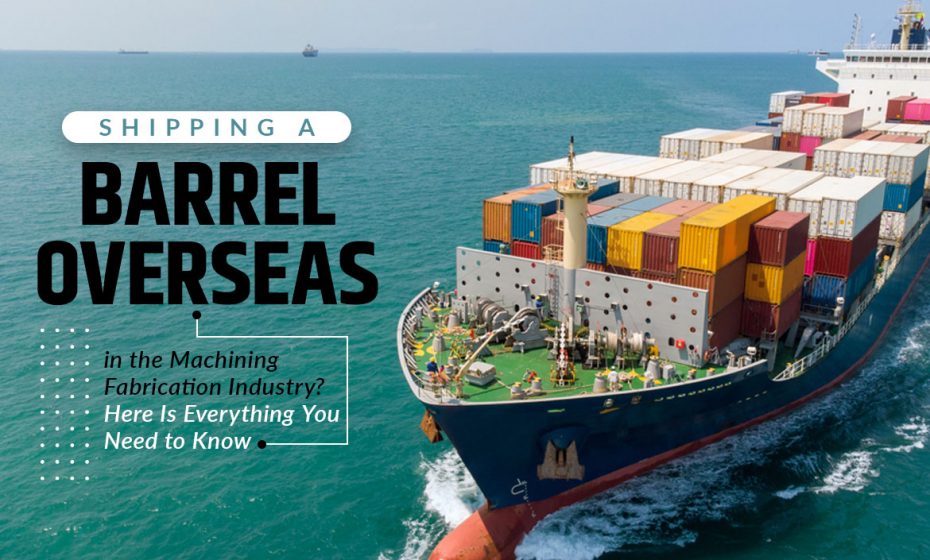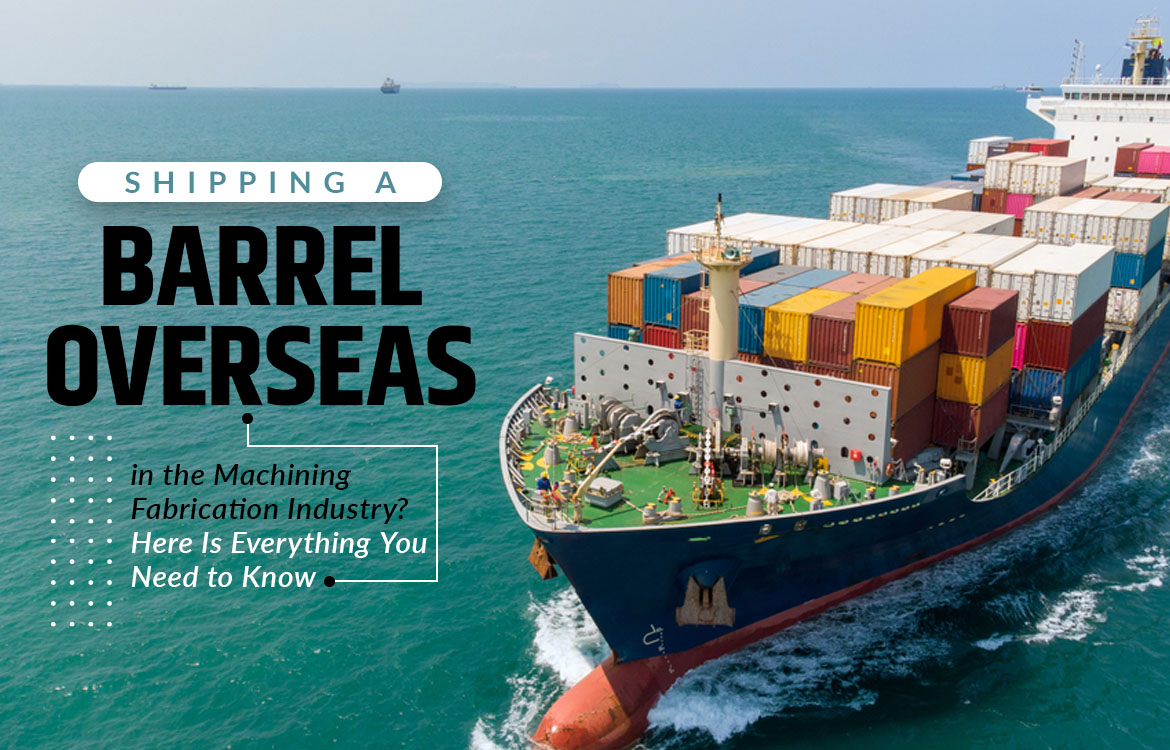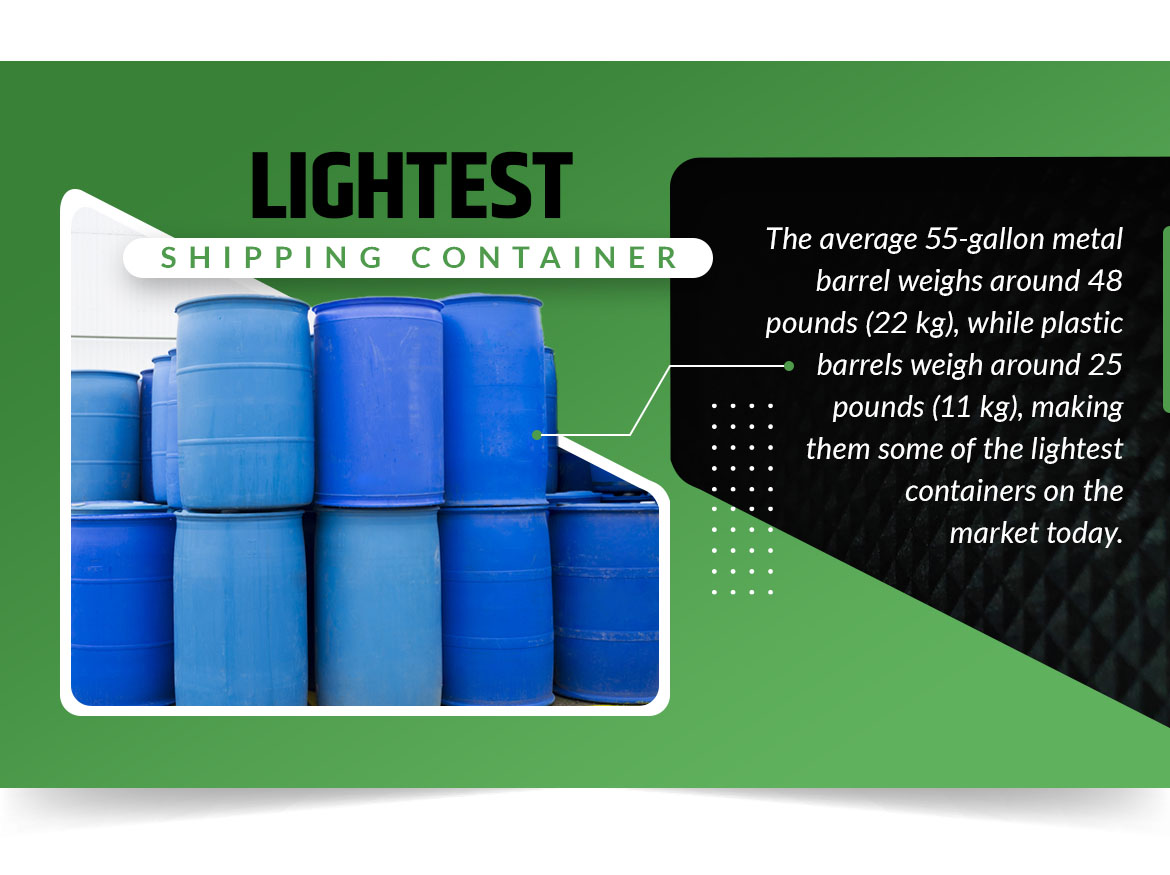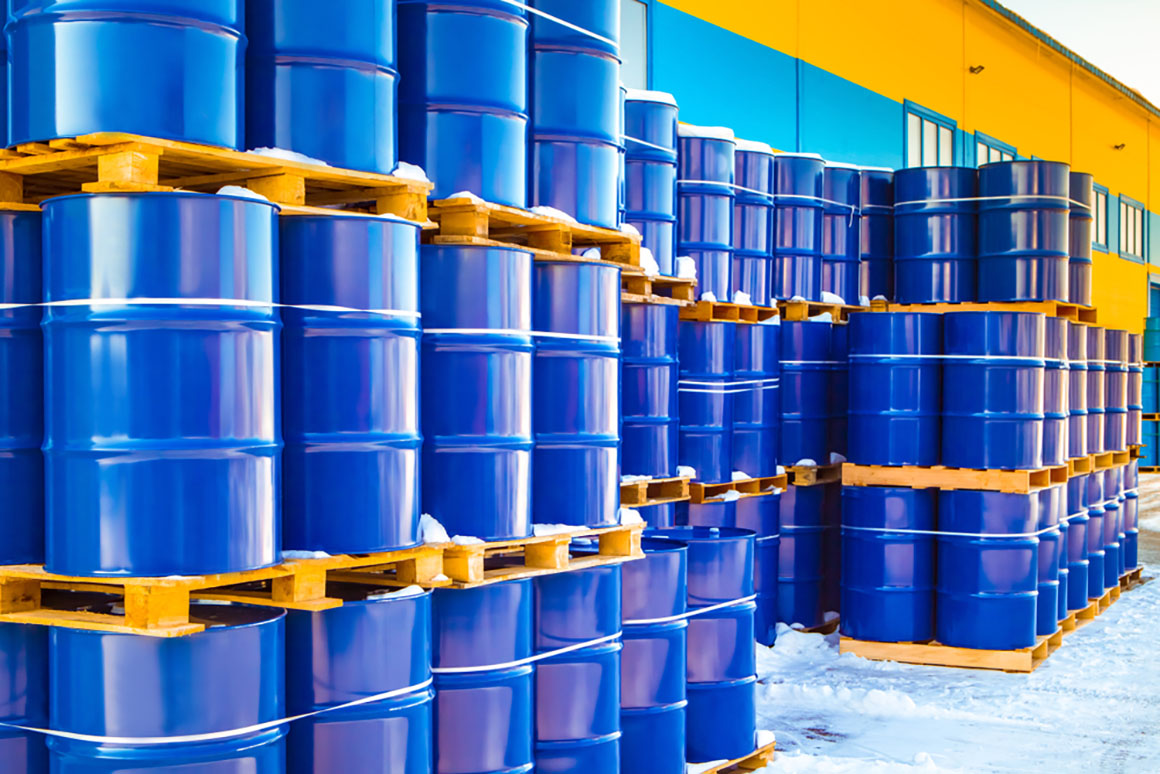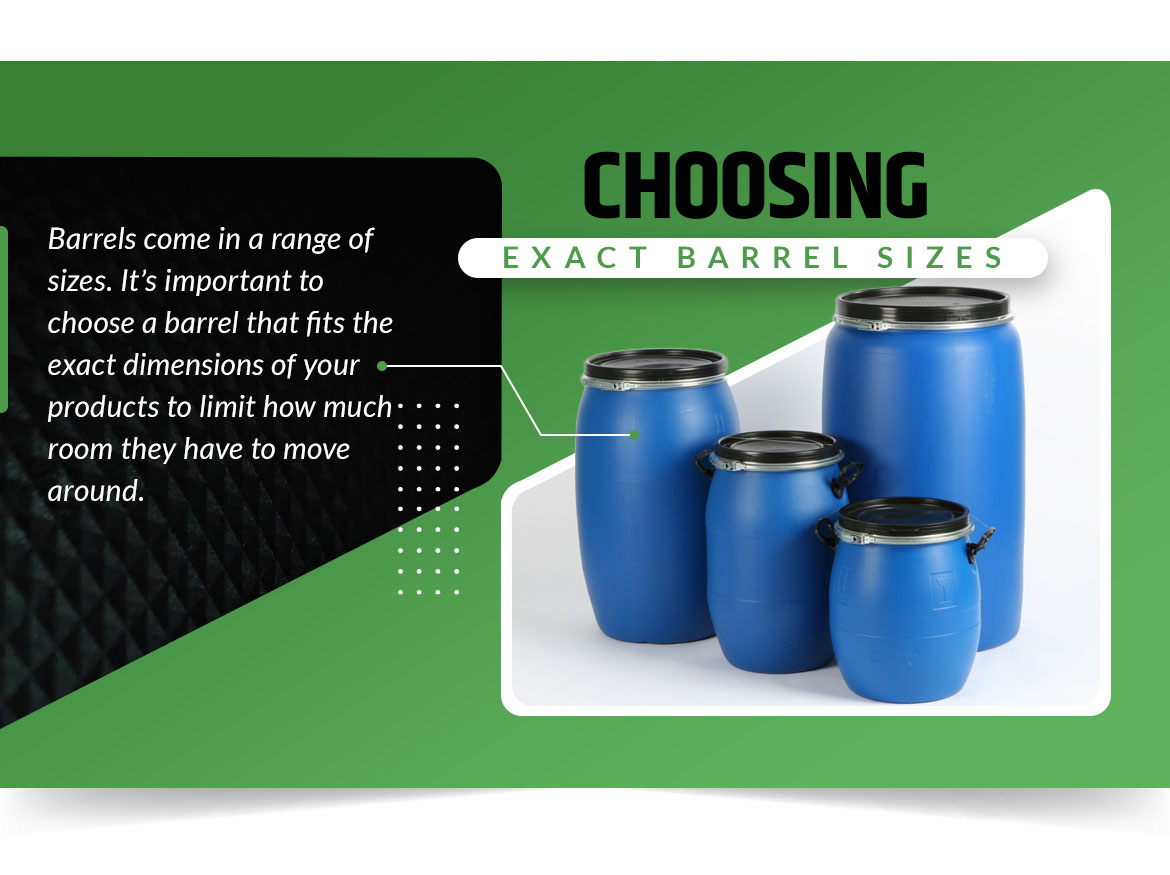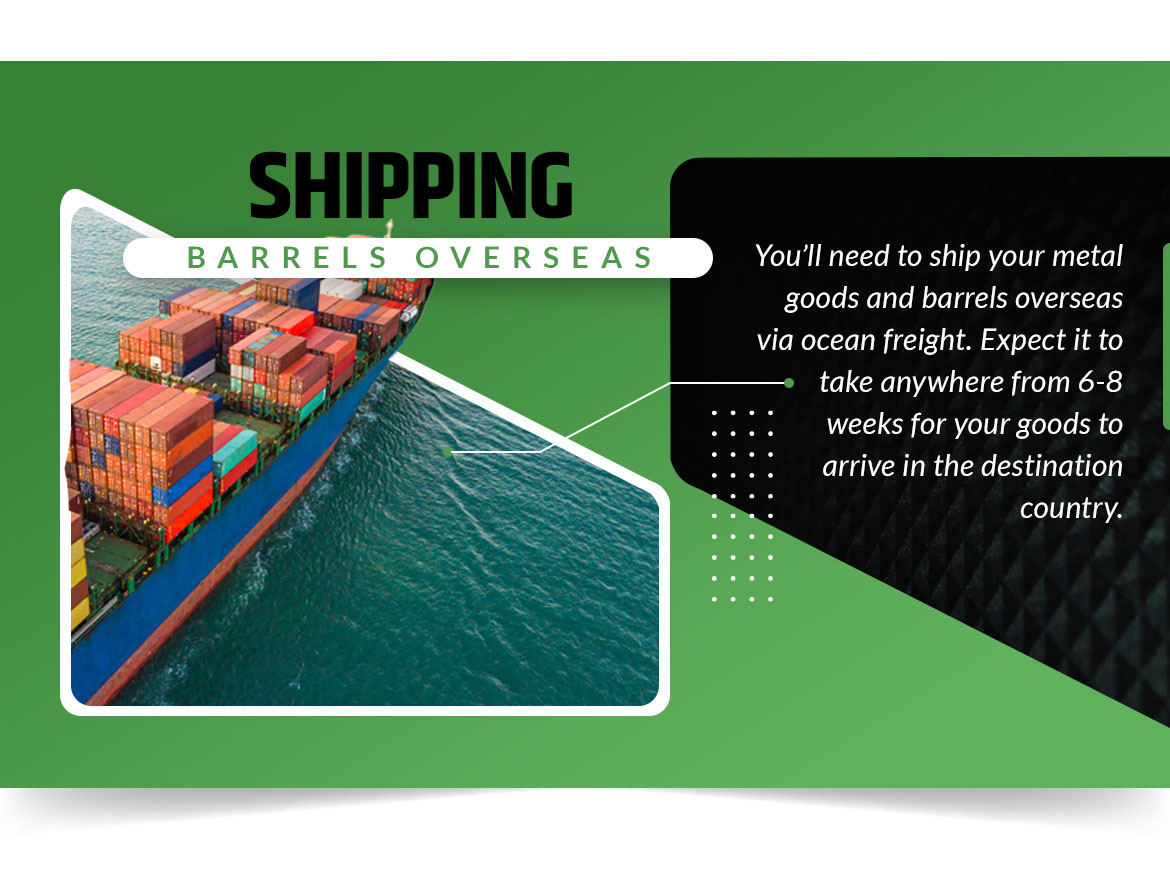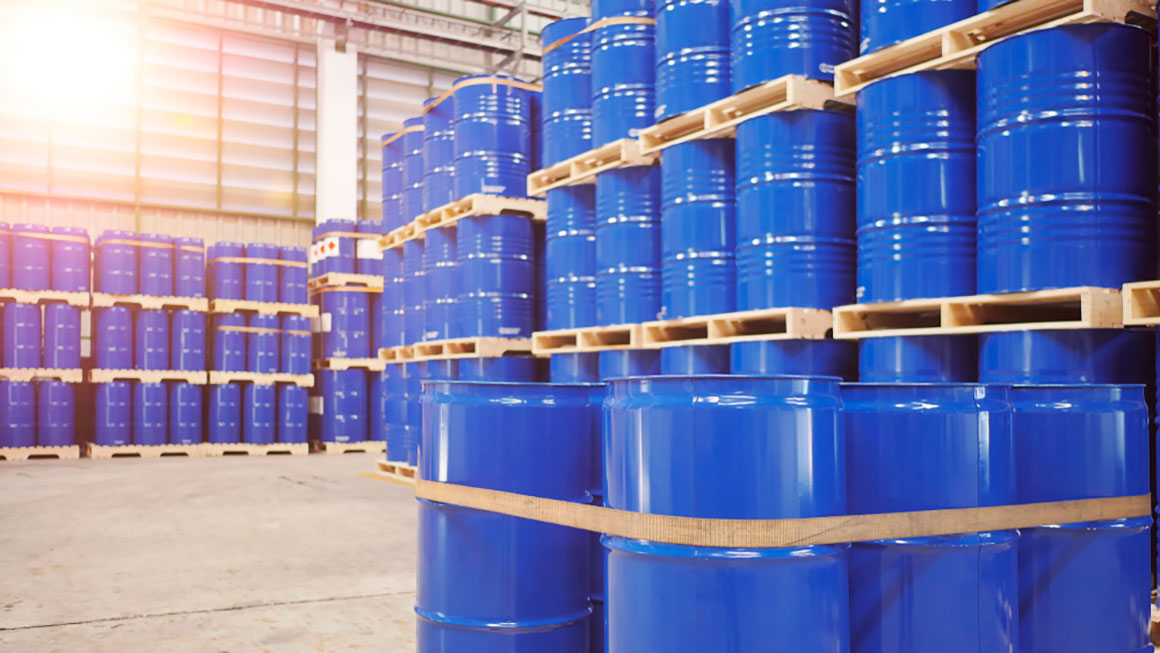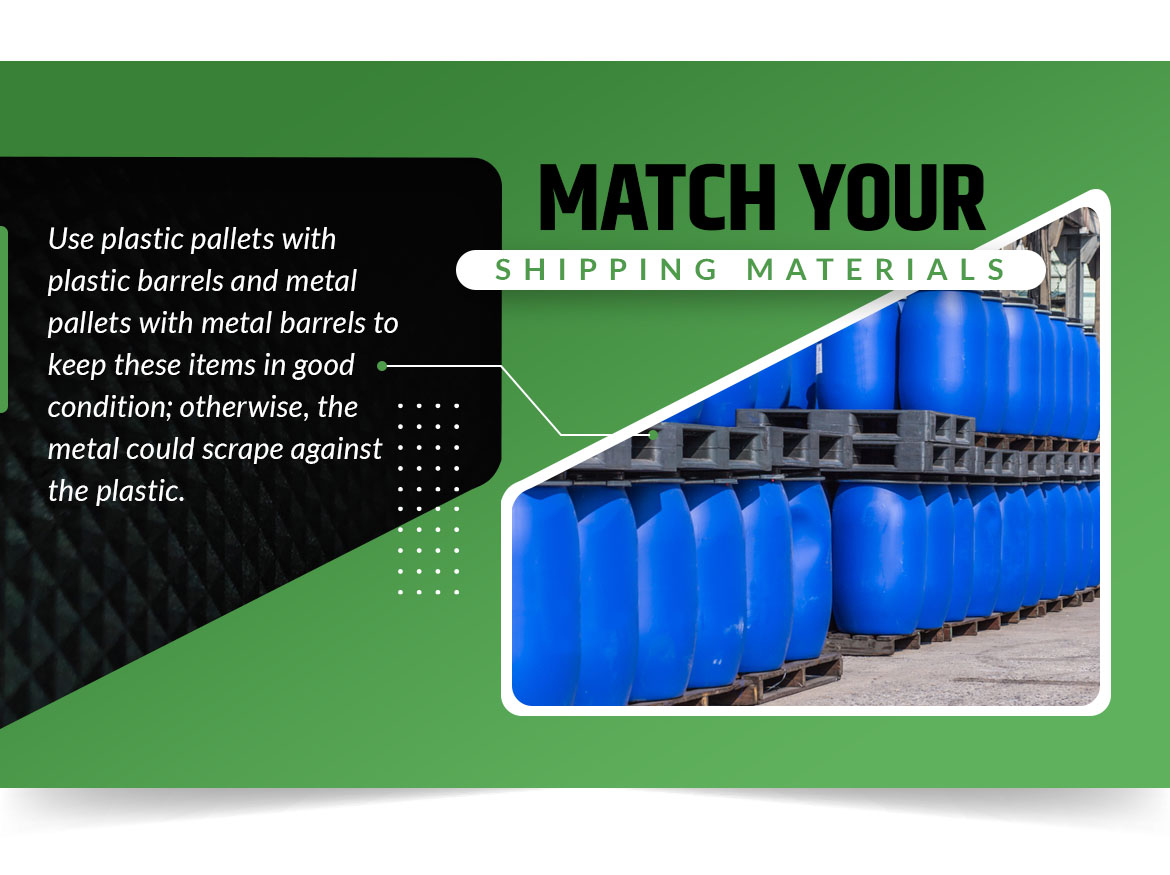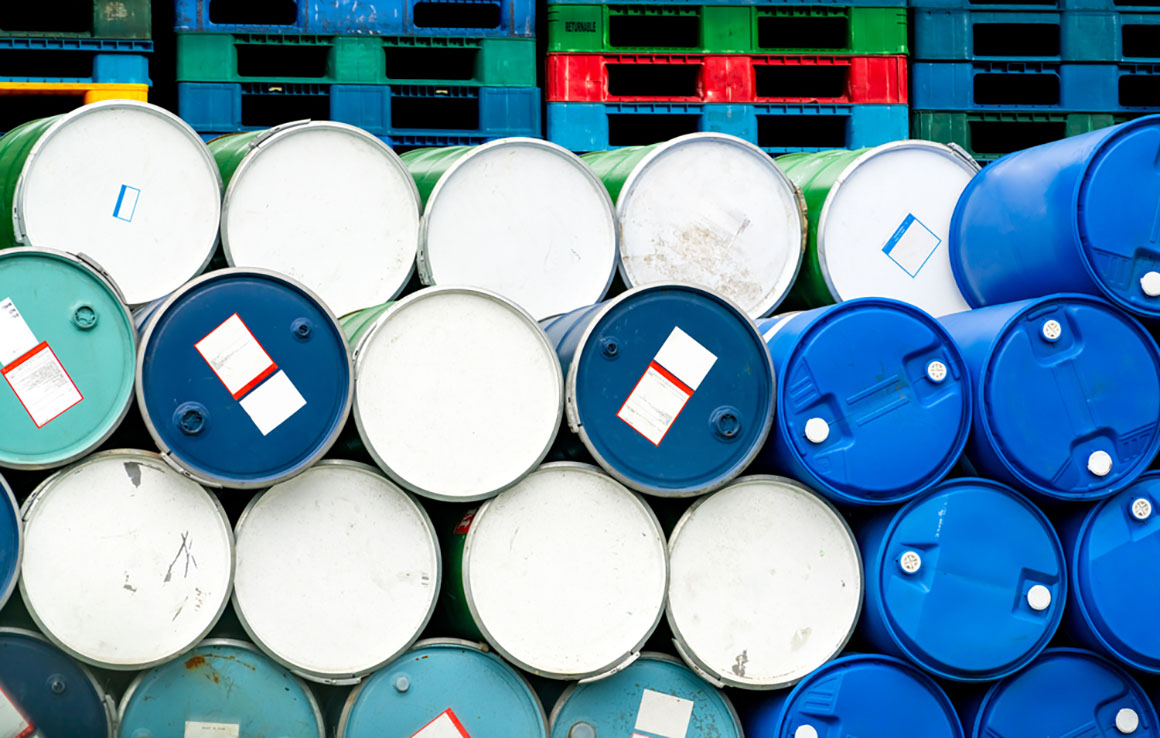If you need to ship items overseas, you might consider packing your goods inside a shipping barrel. These containers are easy to handle and transport to help you get your products to their destination as quickly as possible. They can hold anywhere from three to over 100 gallons of dry or liquid goods and are often used to ship and store raw industrial materials and parts, including metal rods and machine components.
Shipping barrels are known for their added durability on the road, which makes them perfect for international shipping. Your products may be at sea for months at a time as the vessel waits to dock at the port so you’ll need to find a container that won’t break down over time. You’ll need to inspect your barrels before filling them with your products to prevent cross-contamination and make sure your shipments comply with international customs regulations to prevent delays.
From metal storage boxes with lids to wire baskets for storage, there are various options to choose from when shipping barrels. Use this guide to learn how to prepare your metal shipping barrels for overseas travel to save time and money every step of the way.
Why Barrels for International Shipping?
The humble drum barrel has earned its reputation as a reliable, affordable international shipping container. It is designed to store large quantities of goods while minimizing the overall weight of the shipment. Shipping is typically calculated by size and weight, so it’s important to choose the lightest possible container without putting your products at risk.
The average 55-gallon metal barrel weighs around 48 pounds (22 kg), while plastic barrels weigh around 25 pounds (11 kg), making them some of the lightest containers on the market today. Cardboard boxes tend to be the lightest container of all, but they don’t offer as much protection as drum barrels. Your metal rods and plates will quickly rip these boxes to shreds, and drum barrels are usually the next cheapest option. You’ll also need to factor in the combined weight of the contents when calculating the total weight of your shipment.
The great thing about shipping your goods in barrels is that most logistics companies offer flat rates on shipping barrels as long as the weight of the container doesn’t exceed the limit. This can help you save hundreds of dollars on every order.
The international supply chain runs on pallets, and drum barrels are no exception. In the machining fabrication industry, they use metal storage bins and wire baskets for storage along with pallets. You’ll need to attach your barrels to a pallet before sending them off to the logistics company. Once you attach your barrels to a pallet, your team can move thousands of pounds of inventory in just a few minutes using a lift truck or forklift. You can fit up to four 55-gallon barrels onto a single 48” x 48” barrel pallet. The logistics company will also be able to move your goods from one vehicle to the next safely as they make their way to the destination.
You can also reuse your barrels multiple times over without putting your products at risk. It’s always better to utilize sustainable shipping materials whenever possible to reduce your impact on the environment. You won’t have to order more supplies every time you need to ship out an order to reduce your overhead expenses, and your workers won’t have to worry about recycling and breaking down boxes or disposing of plastic wrap at the end of the day. Just rinse out your barrels and inspect them for damage before putting them back on the road.
All these extra materials will also clutter your work environment. Use barrels to simplify the shipping process and reduce your dependence on disposable materials that can decrease efficiency.
How to Ship a Barrel Overseas
If you decide to ship your goods in drum barrels, keep these tips in mind to make sure your products arrive intact and on time:
Choose Your Container
Shipping barrels can be made of metal or steel, plastic or corrugated cardboard. Metal barrels offer maximum protection for your products, especially when shipping raw steel or mechanical parts. It’s best to match the material of your goods to the material of your container. Your metal parts won’t damage the insides of the container, so you can use your barrels more than once. However, metal barrels weigh more, which will increase your shipping costs.
Shop for New and Used Drum Barrels
You might be able to ship your metal goods in a plastic barrel to save money if you put your goods inside another container, such as a cardboard box, before putting them into the barrel or if the objects have smooth edges that won’t scratch or scrape against the plastic, such as round rods and metal shells.
It’s never a good idea to store your metal goods inside a barrel made of corrugated cardboard. The metal will easily rip through the sides, leaking your products onto the floor.
Barrels come in a range of sizes, with the smallest being three gallons and the largest being 110 gallons. Fifty-five-gallon drums tend to be the most common, but it’s important to choose a barrel that fits the exact dimensions of your products to limit how much room they have to move around. You won’t have to spend as much money on plastic fillers and inserts to fill in the gaps.
A 55-gallon drum is 33 inches tall with a 22.5-inch diameter. Be sure to check the weight capacity as well. Many barrels have separate capacities for dry and liquid goods.
You don’t have to buy new barrels when shipping your goods overseas. You can also utilize used shipping barrels to save money on supplies. Companies often trade and sell used containers online after they are finished using them. Metal and plastic barrels can last for years on end without suffering structural damage. You can find a local reseller near you to reduce the shipping cost.
Be sure to inspect the barrel before filling it with your products. You may need to clean out the insides of the container using a disinfectant. Make sure the barrel wasn’t used to ship hazardous materials to prevent exposure and injury.
Find a Carrier
Once you find the right barrel for your products, it’s time to find a carrier that will transport your goods to the destination. You should look for the lowest rate with convenient pick-up times that work with your schedule. Larger logistics companies tend to charge the most, but they have access to a broad network of resources to ensure your products arrive on time, including automated tools that expedite the shipping process. You might be able to save money by going with a smaller logistics company but expect longer wait times. Independent shippers may be unable to deliver to certain countries or markets.
The carrier should be able to deliver to the destination country with an understanding of the local customs requirements. You will also need to know the company will have your back if something goes wrong with your shipment. Look for the option to track your package to make sure you can follow its route in real-time. The company should also have a dedicated customer service line staffed with knowledgeable agents who can answer your questions.
You’ll need to ship your metal goods and barrels overseas via ocean freight. The company will give you an estimated arrival time with a set pick-up date. Expect it to take anywhere from six to eight weeks for your goods to arrive in the destination country. Port congestion due to high demand and other delays may also extend travel times.
Research the Destination
The shipping company should be able to help you comply with the destination country’s customs requirements so you can prepare your containers ahead of time, but you’ll need to do some research of your own. You’ll need to assemble all the necessary documents before handing over your package to the logistics company.
Exporters must have the following documents when moving goods overseas:
- Pro Forma Invoice
- Commercial Invoice
- Packing List
- Bill of Lading
- Exporting License
- Electronic Export Information Filing or Automated Export System
- Destination Control Statement
- International Commercial Terms
- Safety Data Sheet
Visit the International Trade Administration to learn more about these requirements.
How to Pack Your Barrels for Overseas Shipping
With the pick-up date set, it’s time to load your goods into the shipping barrel.
You can either store your goods directly in the barrel or put them inside another container first to keep loose items organized. Cardboard boxes aren’t typically used with metal, considering the sides can easily rip apart. They also spread dust and debris that can make a mess inside your barrels.
Use stackable totes to store smaller metal items, such as nuts, screws, bolts and washers, that won’t damage the sides of the container. They come with interlocking edges that snap together, which makes it easy to load the container. They work well with plastic barrels. You can also store the totes directly on the shelf so you don’t have to repackage the goods before sending out your package. You can stack the totes on top of each other to make the barrel more stable as well.
When loading the barrel, be sure to put the heaviest items on the bottom. The weight should be evenly distributed on the bottom layer so the barrel doesn’t tip over or shift to one side.
Fill the barrel as much as possible without going over the weight capacity so the contents don’t shift in place during transit. Use sustainable inserts and plastic dividers to fill in any gaps.
Use Metal Storage Bins to Protect Your Inventory
Handling and Transportation
Once you have packed your barrels, you’ll need to attach them to a pallet so the logistics company can safely move your goods onto the shipping container. Use a barrel pallet that measures 48” x 48” to move as much of your inventory as possible.
Again, it’s best to match your shipping materials. Use plastic pallets with plastic barrels and metal pallets with metal barrels to keep these items in good condition; otherwise, the metal could scrape against the plastic.
You’ll also need to find a way to secure your barrels to the pallet to make sure they don’t fall off the pallet or get lost along the way. There are several options for mounting your barrels to the pallet. You can use plastic wrap, but the barrels will likely roll right through the plastic. You can also use ratchet straps to secure the barrel to the pallet, but this limits how many containers you can move at once.
You can also store your barrels inside wooden shipping crates and attach them to a wooden pallet for international shipping. These crates are easy to produce, so you should be able to find one at your price point.
Consider storing your barrels in metal storage bins to increase efficiency. Some bins come with wheels, so workers can push the shipment around by hand instead of using a lift truck. They also come with slots that work with lift trucks for easy handling and transportation. You can store your goods directly inside the metal bin and forgo the barrel altogether. Many bins come with drop down doors to keep your inventory accessible on the rack.
When preparing your barrels for transport, make sure your shipment complies with the logistics company’s requirements. They may only accept inventory if it is on a pallet, or they may charge you extra for palletization services.
Labeling and Documentation
Once the shipment is ready for pickup, make sure you have all the necessary documents. Attach copies of these forms to the container with the destination country clearly visible. Hand off the documents to the logistics company at pickup. You can also send them electronically if the company offers this option.
Inspect the shipment one last time before handing it off to the driver.
You can then track the package as it makes its way through the supply chain. Keep your clients informed every step of the way.
Image Credits
Applesixstudio/Shutterstock.com
Takanazee/Shutterstock.com
herjua/Shutterstock.com
Kirsanoch/Shutterstock.com
Avigator Fortuner/Shutterstock.com
kasarp studio/Shutterstock.com
GreenOak/Shutterstock.com
FOTOGRIN/Shutterstock.com
Photo smile/Shutterstock.com
Fahroni/Shutterstock.com
